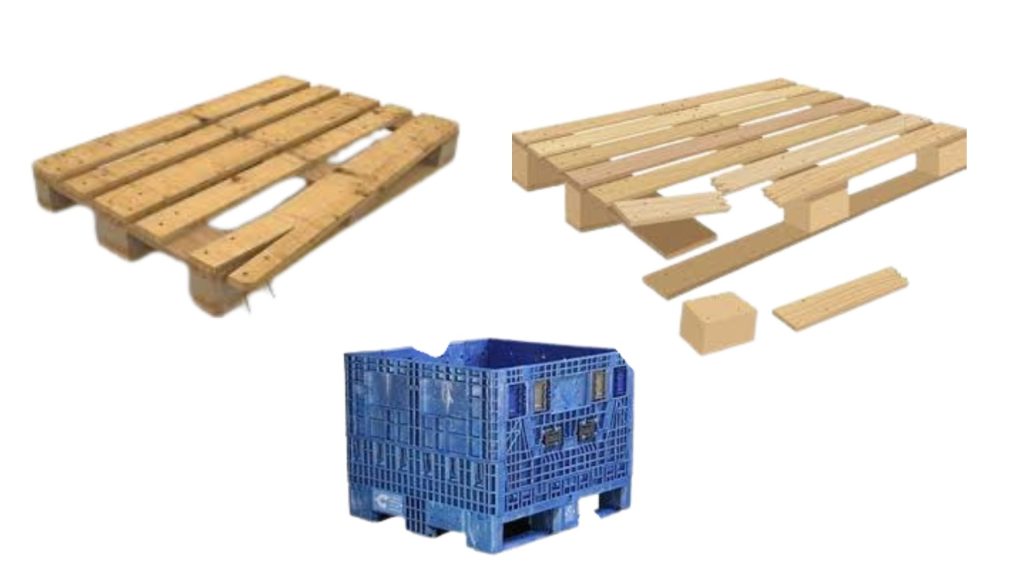Mobile robots (AGVs and AMRs) at industrial automation have a few well-known enemies.
The most obvious one?
Humans. Unlike robots, we don’t always behave in a predictable or consistent way.
But there’s also a quieter, more insidious enemy: damaged load carriers. Pallets, automotive containers, and other reusable packaging.

Why are they such a problem?
Because poor-quality or damaged units prevent AGVs and AMRs from working smoothly, often forcing human intervention.
The main causes usually come down to two factors:
- Low quality, often worsened by multiple reuse cycles.
- Damage caused during manual handling, regardless of the original quality.

When mobile robots handle pallets or containers in bad condition, two things (or both) can happen:
A) The load carrier and/or its contents fall.
B) The AGV or AMR stops unexpectedly.
As a consultant, this is something I encounter almost every day. And it always leads to the same question:
👉 “What percentage of your pallets or containers are in poor condition?”
A question to which, surprisingly, almost no one has a clear answer. Yet it can determine whether an automation project is viable or not.
Think about it: for many clients, if the AGV/AMR stops just 5% of the time, that’s already a disaster. And they’re right, it’s all about availability.
🟠At Moving Robots, we always recommend requiring system availabilities above 99.8%.
So… What solutions exist when pallets and containers aren’t in good shape?
1️⃣ The easy but expensive solution: replace any suspect units with brand new ones. A standard wooden pallet costs around €6–10 in Spain. Imagine replacing 10,000 units.
Not very realistic.
2️⃣ Automate only with good units: filter out the damaged ones and leave them for manual handling.
The downside? If the percentage of bad carriers is too high, automation may no longer make sense.
3️⃣ Use slave pallets/containers: a halfway solution. You keep the damaged ones for shipping, but within your plant you move everything on higher-quality slave units.
The drawback? Double handling, you need to put on and remove the slave carriers each time.
The condition of pallets and containers might seem like a small detail, but in automation it can make or break a project. Ignoring it means underestimating one of the biggest hidden enemies of mobile robots.

Your turn: would you risk running a fleet of robots if even 5% of your load carriers couldn’t be trusted?
At Moving Robots, we help you detect these risks before they become costly failures.
If you want to automate from scratch or improve your already autolmated flows, we have the experience and knowledge to make it happen safely, tailored to your case and with a vendor-agnostic approach.
We’ll support you from the analysis and definition of the project all the way to go-live supervision (or at specific times when you need assistance).
Don’t risk your budget, contact us!






